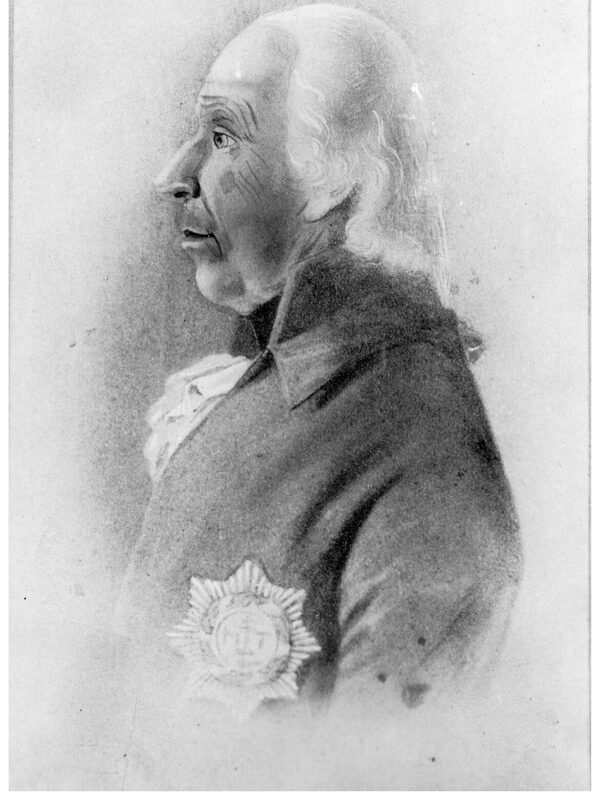Friedrich August, Prince of Nassau-Usingen, Duke of Nassau
Friedrich August, Prince of Nassau-Usingen, Duke of Nassau
Officer, Regent
Born: 23.04.1738 in Usingen
died: 24.03.1816 in Biebrich
Frederick was the second eldest son of Prince Karl zu Nassau-Usingen. He had moved his residence permanently to Biebrich in 1744 and the seat of government to Wiesbaden. Friedrich therefore grew up in Biebrich from an early age.
As a second-born son with no apparent prospects of becoming a regent, he embarked on a military career. In 1756, he joined the Austrian army, where he quickly advanced: to Major in 1757, Colonel in 1759, Major General in 1763, Chief Director of the Imperial War Service Advertising in 1764, Imperial Field Marshal Lieutenant in 1780 and Imperial Field Marshal in 1790.
After the death of his elder brother Prince Karl Wilhelm zu Nassau-Usingen in 1803, who left no male heirs, Frederick stepped into the role of reigning Prince of Nassau-Usingen without much preparation, and this at an extraordinarily turbulent time. Having previously fought on the side of Austria, he now had to accept Napoleon's alliance involuntarily.
His reign was characterized by three major challenges: the territorial changes that Nassau-Usingen underwent through the cession of the left bank of the Rhine to France and the incorporation of secularized and mediatized territories on the right bank of the Rhine, the elevation to the rank of duke resulting from joining the Confederation of the Rhine and the simultaneous unification of Nassau-Usingen and Nassau-Weilburg into a jointly governed sovereign duchy, and the provision of troops for the Napoleonic army. Together with Prince Friedrich Wilhelm zu Nassau-Weilburg and supported by outstanding civil servants such as the ministers Ernst Marschall von Bieberstein and Christoph von Gagern, the government president Karl Friedrich Justus Emil von Ibell and the jurist Harscher von Almendingen, he carried out forward-looking reforms. These ranged from the administration to the financial, legal and social systems and the military. The Landständische Verfassung of September 1 and 2, 1814 marked a high point.
Frederick concentrated on representative tasks and the supreme command of the military. He liked to retire to the Mosburg, which he had built from 1806 over the ruins of an older complex at the rear of Biebrich Palace Park. The construction of the old Kurhaus, which opened in 1810, is also associated with his name. As he left behind several daughters but no son entitled to inherit, Prince Wilhelm of the Weilburg line succeeded him as Duke of Nassau. Friedrichstraße in Wiesbaden is named after him.
Literature
Even, Pierre: The Luxembourg-Nassau dynasty. From the Counts of Nassau to the Grand Dukes of Luxembourg. A nine-hundred-year history of rulers in one hundred biographies, Luxembourg 2000 [p. 62 f.].
